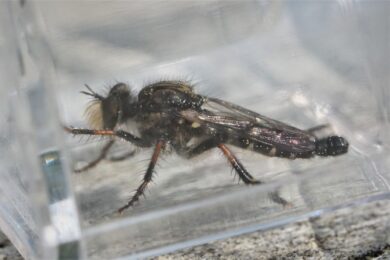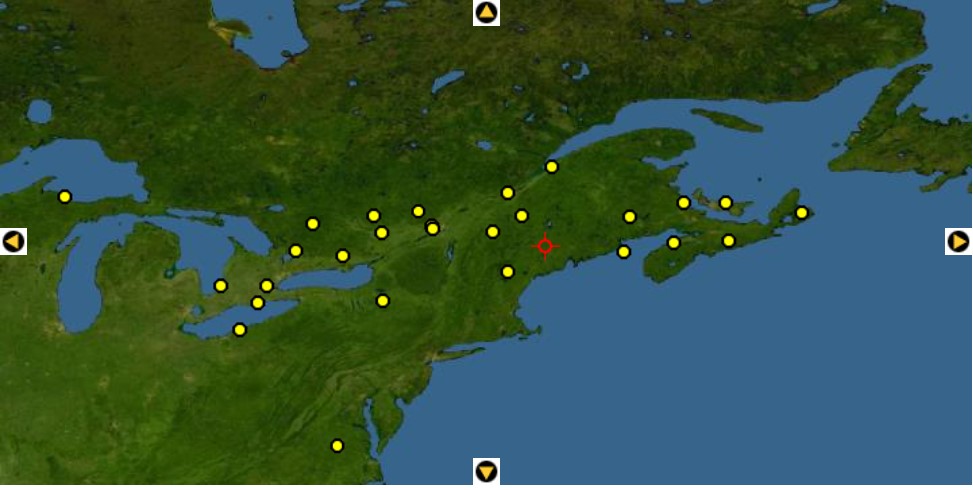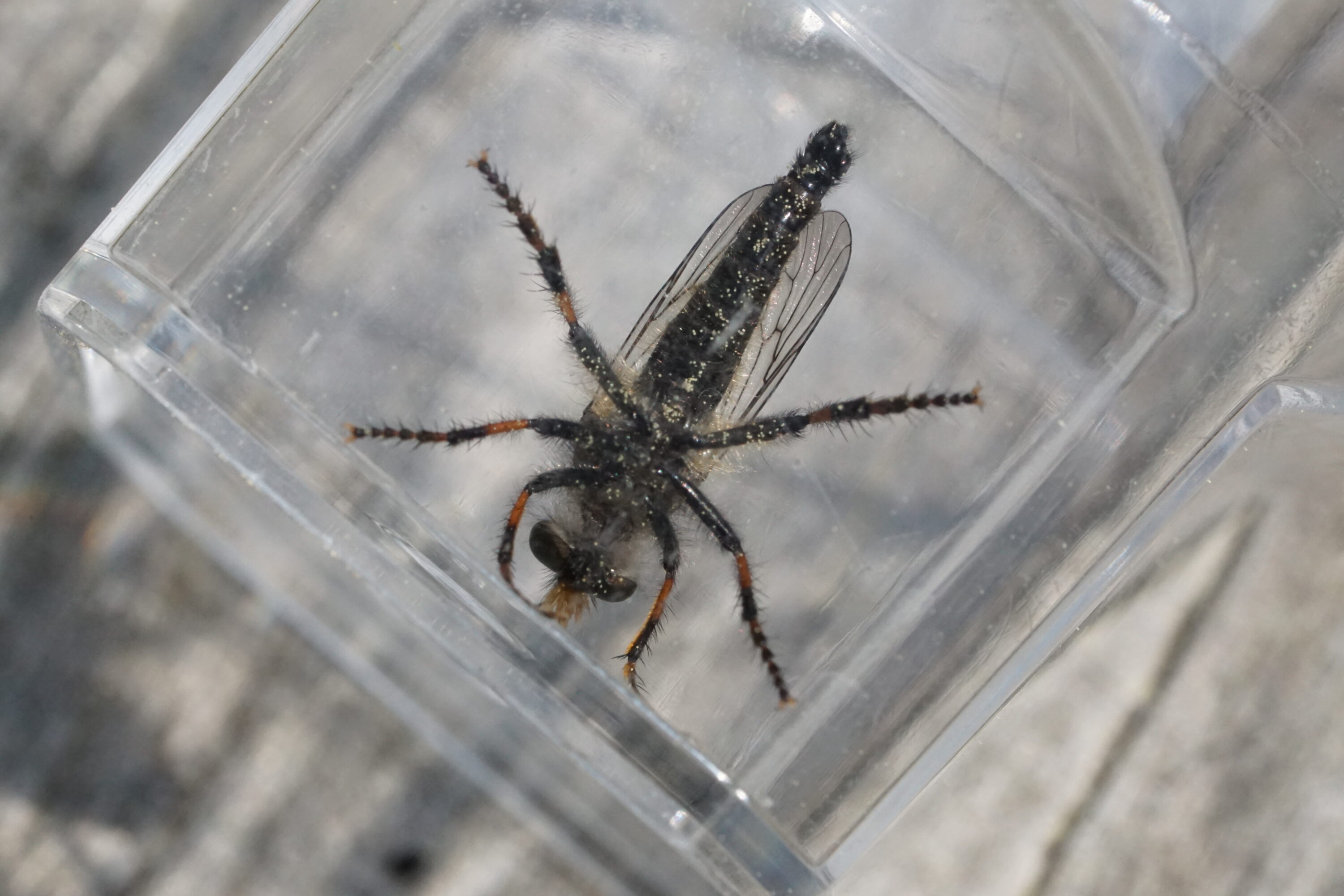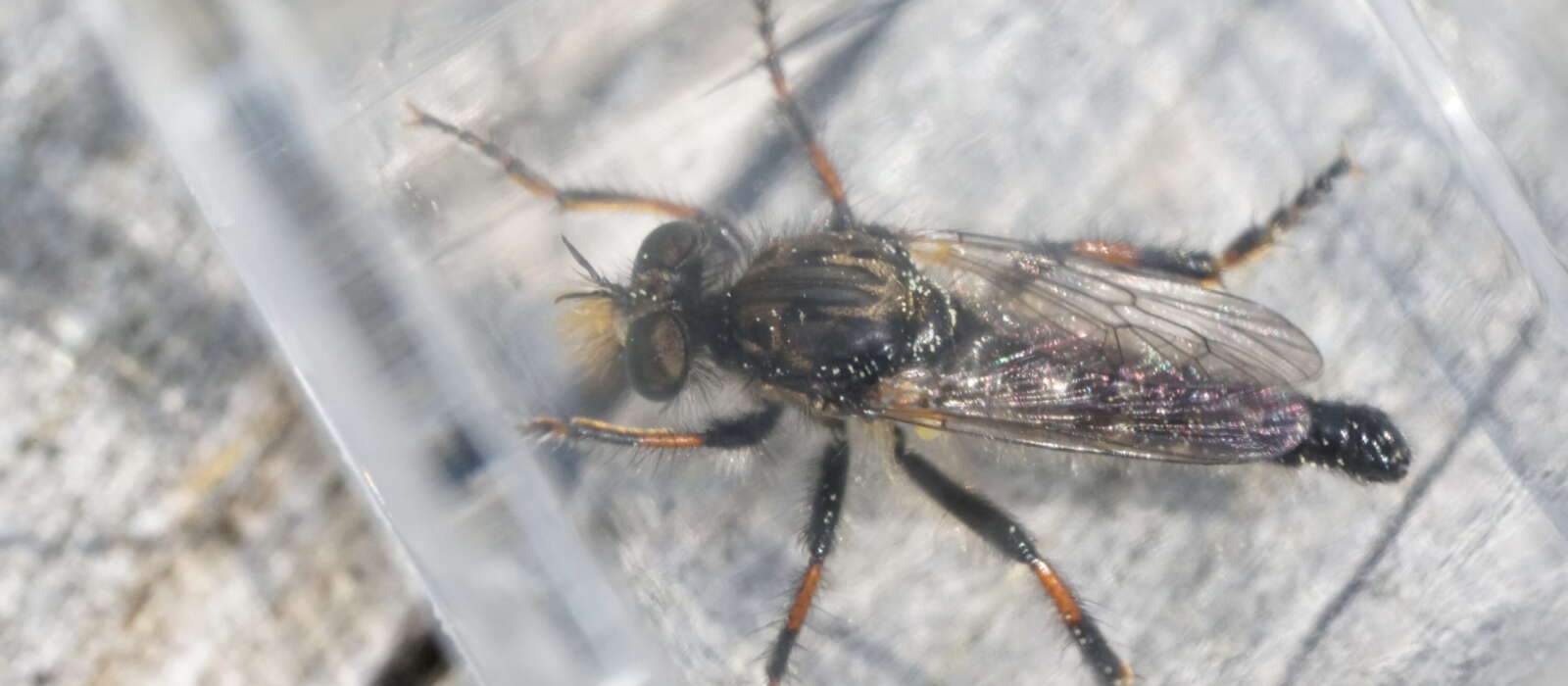
Cyrtopogon falto
Cyrtopogon Falto: a New Robber Fly for Martha’s Vineyard
About two years ago, I was exploring the site of a recent prescribed burn in Edgartown, Massachusetts. I found and photographed a robber fly with distinctive, yellowish hair on its face, white bands on the abdomen, and tibiae with sharply demarcated coloration, with the basal or upper half red and the distal or lower half black. The size, dense body hair, and behavior all called to mind the genus Cyrtopogon, which I knew from many sightings of C. marginalis in sandy areas of the Vineyard. I tentatively ID’d this fly as Cyrtopogon falto. But it had been difficult to photograph, active and in bad light, and the photos were not good enough to support a firm identification.
C. falto (it has no common) was an intriguing possibility. Apparently not very common, the species tends to associate with pine or pine/oak barrens habitats and has a distribution that lies mostly well north and west of Martha’s Vineyard:

Distribution of Cyrtopogon falto records in the Northeast, from Discover Life
But the Vineyard is noted for its barrens habitats and the persistence of some barrens species that have a generally more northern or higher-elevation distribution (the Hoary Elfin butterfly and its larval host plant, Bearberry, are good examples). So I couldn’t quite let go of the notion that Cyrtopogon falto is an unexpected component of the island’s robber fly fauna.
Then, on May 22, 2023, I was looking for insects outside the BiodiversityWorks office in Vineyard Haven. I spotted two robber flies basking on the leaves of a highbush blueberry plant. It was hard to miss the yellow mystax (facial hair) and two-tone tibiae on these flies: here was my chance!
Maneuvering into position and raising my camera to snap what I was certain was the long-sought Cyrtopogon falto, I encountered the photographer’s worst nightmare: the “No Memory Card” message flashing in the viewfinder! I’d left the card in the card reader of my computer inside the office. Frantically, I assessed my chances of running inside, getting the card, returning to the same spot, and finding at least one of the flies still there. I didn’t like the odds. But I recollected that I had a plastic vial in my pocket, on hand to collect interesting bees, and with great care and a healthy dose of blind luck, I managed to slip it over one of the robber flies and capture it.
With a specimen in the vial, I was able to get the memory card and then take photos at my leisure. The images were a bit washed out – the price of photographing through plastic – but they came out well enough to substantiate the identification of Cyrtopogon falto. I retained the specimen for the BiodiversityWorks insect collection, as permanent documentation of the occurrence of this robber fly at a location on the very fringe of its range.

Cyrtopogon falto – underside view
C. falto brings to 18 the number of robber fly species the MV Atlas of Life has been able to document on the Vineyard. It’s hard to assess how common this species actually is here. I don’t think it could be very plentiful, or I wouldn’t have had such a hard time documenting it. But the presence of multiple individuals outside our office suggests that, in the right habitat, it might be reasonably common. Like its relative C. marginalis, which strongly favors open, sandy habitat, C. falto probably has a pretty specific idea of what conditions it likes. I just haven’t yet figured out what its preferences are.
Matt Pelikan is the director of the Martha’s Vineyard Atlas of Life project at BiodiversityWorks.
